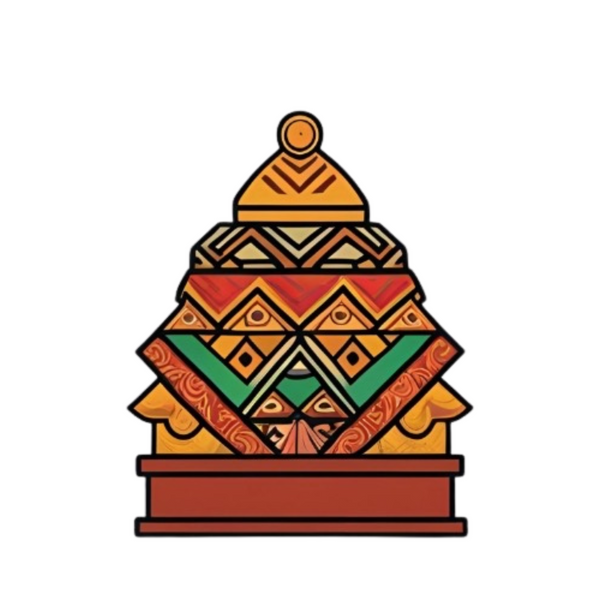
Padmasambhava’s Prophecy: Why the Enlightened Ones of the Degenerate Age Will Not Be Found in Monasteries
Share
Padmasambhava, the great tantric master who brought Buddhism into Tibet, once left behind a prophecy:
“In the Degenerate Age, the true awakened beings will not be found in monasteries.”
At the time, this statement caused a storm. Many respected monks and abbots in Tibet were unsettled. Why would such a revered master make a declaration that seemed to shake the very foundation of monastic life?
To understand this prophecy, we must revisit a story from Padmasambhava’s life.
⸻
A Monk Who Walked Away
During the reign of King Trisong Detsen, Padmasambhava was invited from India to Tibet to establish Buddhism. When he arrived at Samye Monastery, Tibet’s first great monastery, he encountered a situation that deeply illustrated his teaching.
There was a monk named Zhigu, who had practiced diligently in the monastery for more than thirty years. He was strict with his vows, recited countless scriptures daily, and was respected by all. Yet one day, to everyone’s shock, he announced that he was leaving the monastery to live as an ordinary merchant in the marketplace.
Some accused him of backsliding, others thought he had fallen under demonic influence, while a few whispered this might be a sign of the “Degenerate Age.”
On the eve of his departure, Zhigu came to Padmasambhava. Calmly, he said:
“Master, for years I have chanted and meditated, believing this to be the ultimate path. Yet the more I practice, the further liberation seems to slip away. Why is this?”
Padmasambhava smiled and asked:
“What do you think true liberation looks like?”
Zhigu hesitated, then admitted:
“I used to think it meant withdrawing from the world, cutting off all desires. But now I wonder if this idea itself is just another attachment.”
Padmasambhava replied gently:
“This very doubt of yours is more valuable than all your years of chanting.”
Word of this exchange spread quickly. Some claimed Zhigu had awakened, others that he had lost his way. Confusion rippled throughout Samye.
⸻
The Marketplace as a Monastery
Soon after, senior monks approached Padmasambhava with their concerns. They had practiced for decades, held vows unbroken, yet confessed they still felt overwhelmed by inner turmoil.
Padmasambhava responded with a story:
“Yesterday, I met a farmer in the market. Every morning before dawn, he waters his vegetables. At first, he told me, it was tiring. Later, seeing the plants grow, his heart filled with joy. Eventually, while watering, he lost all sense of self — he felt only water, earth, plants, and sky as one. Without ever studying scriptures, he had touched the truth of no-self.”
The monks were astonished. Padmasambhava continued:
“Tell me, if one recites the entire Buddhist canon but is full of pride, is that true practice?”
The hall fell silent.
At that moment, a weathered merchant entered, saying he had returned to fulfill a vow: to perform one hundred acts of kindness in a year. He explained, almost shyly:
“I simply helped where I could — carried loads for the elderly, offered rides to travelers, gave coins to the poor. Nothing grand, just daily acts.”
Padmasambhava asked if such actions hurt his business. The man laughed:
“At first I feared so, but instead, I gained friends and trust. My business has flourished. For me, trade and compassion are inseparable.”
A young monk asked in wonder:
“Does this mean one can truly practice even in the busy world?”
Padmasambhava answered:
“Practice is not about escaping the world, but transforming it. True realization is to see the Dharma in rice and salt, in human relationships, in the ordinary rhythms of life.”
⸻
The Mark of the Awakened
The monks pressed further: if not in monasteries, where would the enlightened ones of the Degenerate Age be found?
Padmasambhava replied with intensity:
“The awakened ones of this age will not announce themselves as practitioners. They may be farmers, merchants, servants, or rulers. They may never wear robes or chant mantras. Yet in every gesture, they will embody wisdom and compassion.”
He then revealed their defining trait:
“They do not treat practice as practice. Their entire life is practice. Cooking, laboring, speaking, helping — all of it flows as Dharma.”
Some monks protested: “But how can one be liberated without vows or meditation?”
Padmasambhava answered:
“Many cling to practice as an identity, turning it into a burden. But true Dharma is freedom. The farmer who loses himself in watering, the merchant who naturally acts with kindness — they know nothing of philosophy, yet they live the essence of the path. They are free because they are not trying to be free.”
⸻
Beyond Monasteries, Beyond Forms
Padmasambhava concluded with a final teaching:
“In this Degenerate Age, enlightenment belongs to those who live awake in the world. They are not trapped by purity nor drowned in impurity. They walk the middle way — not in temples alone, but in marketplaces, kitchens, and homes.
Do not mistake outward form for realization. Instead of clinging to external rituals, turn inward. Instead of chasing purity, remain clear even in the midst of dust. That is the true practice of this age.”
⸻
✨ Takeaway for Modern Readers
Padmasambhava’s prophecy was never a rejection of monastic life, but a reminder: awakening is not confined to walls of stone and ritual. In today’s world, the awakened may be the nurse showing compassion, the teacher inspiring wisdom, the farmer working with the earth, or the parent raising a child with patience.
The true monastery is not only built of bricks, but also of our daily lives.
࿐འོད་ཟེར། Woser
EverestArtStudios
